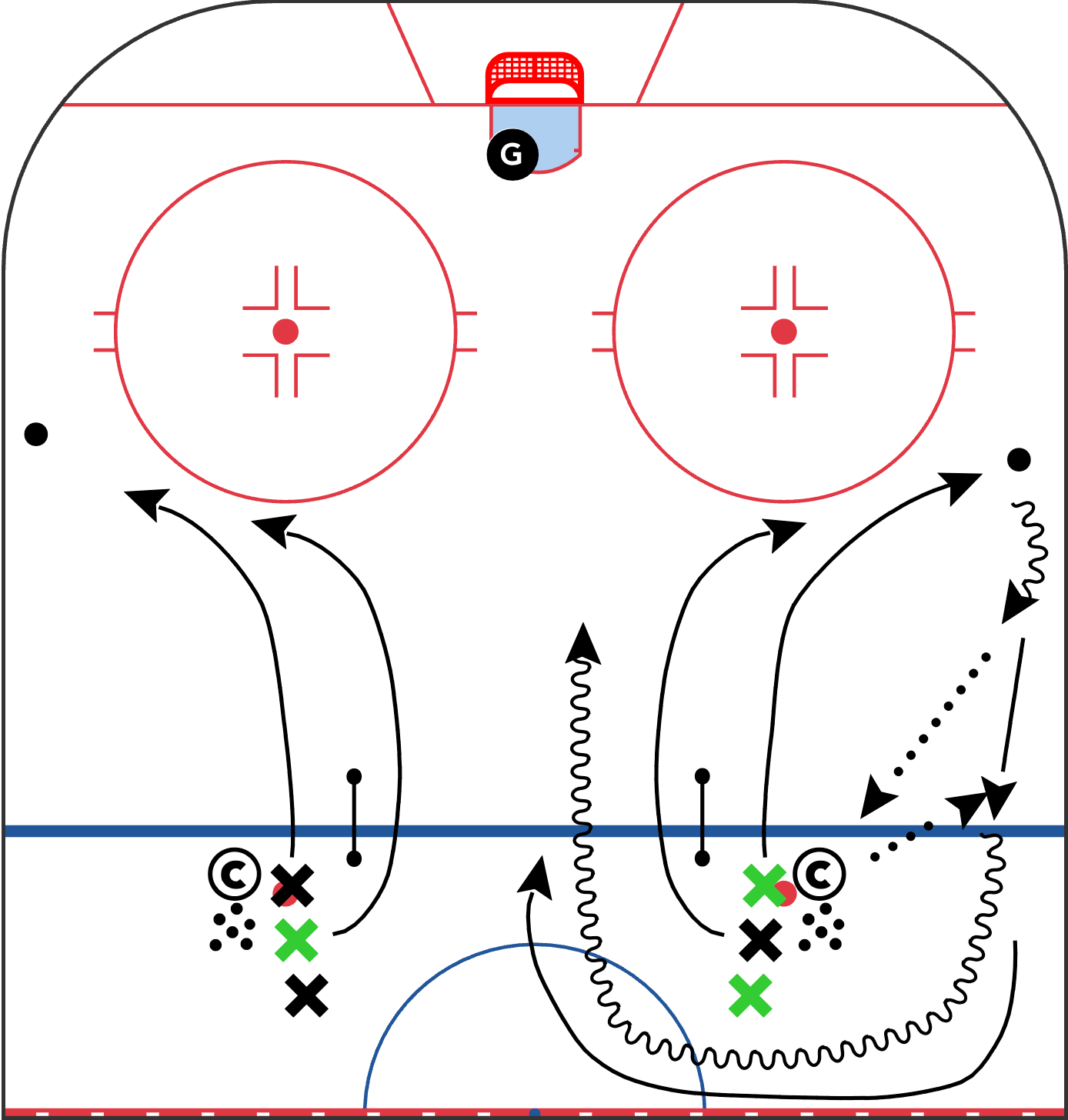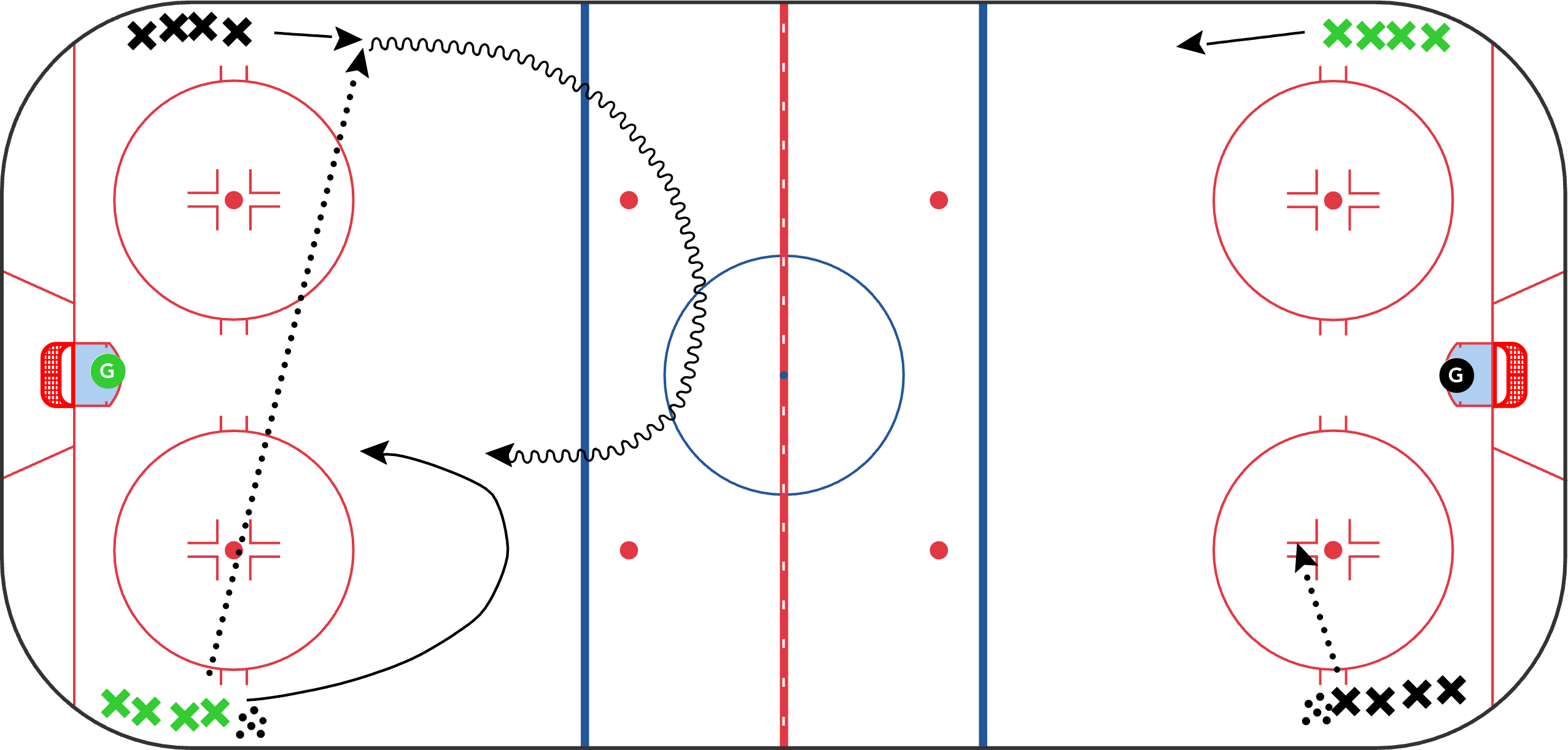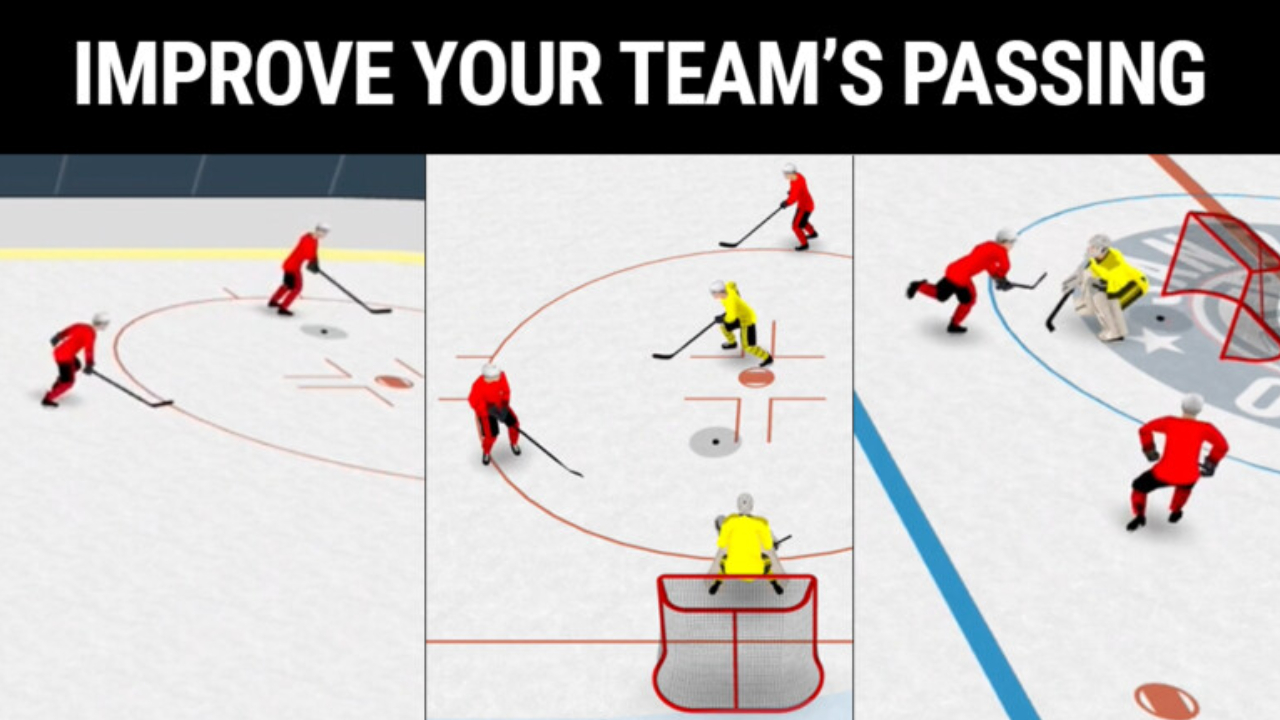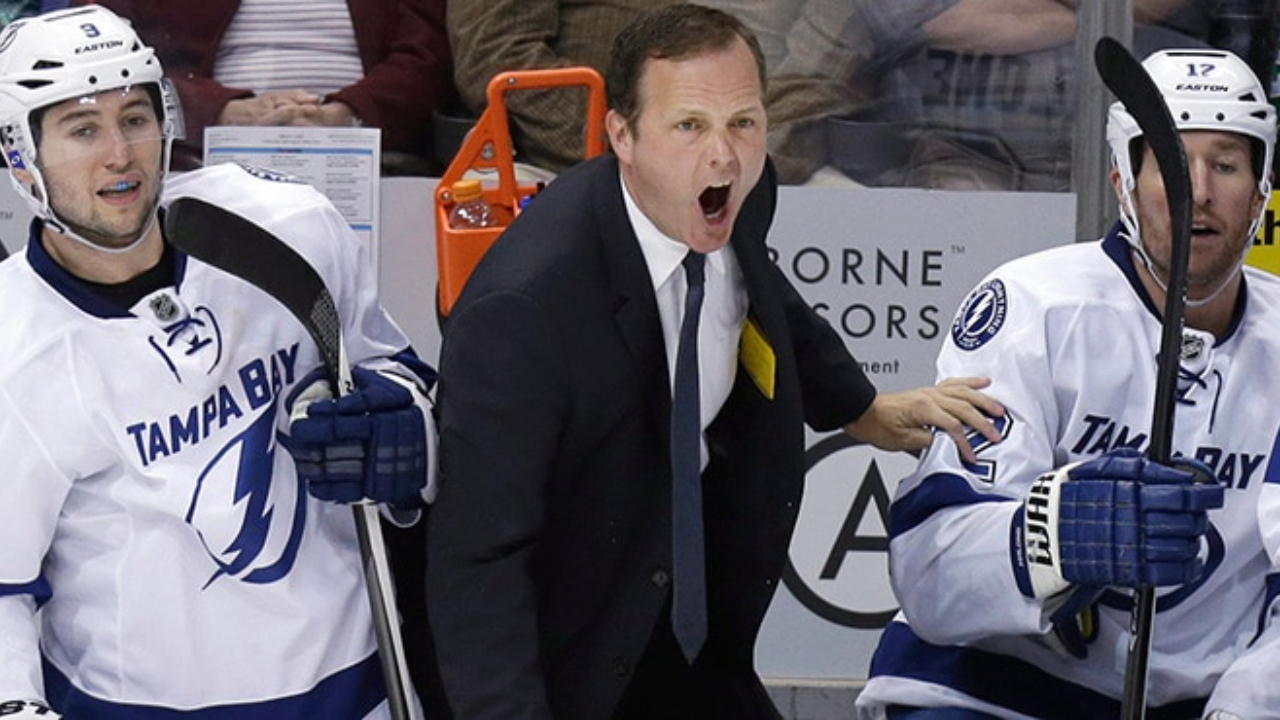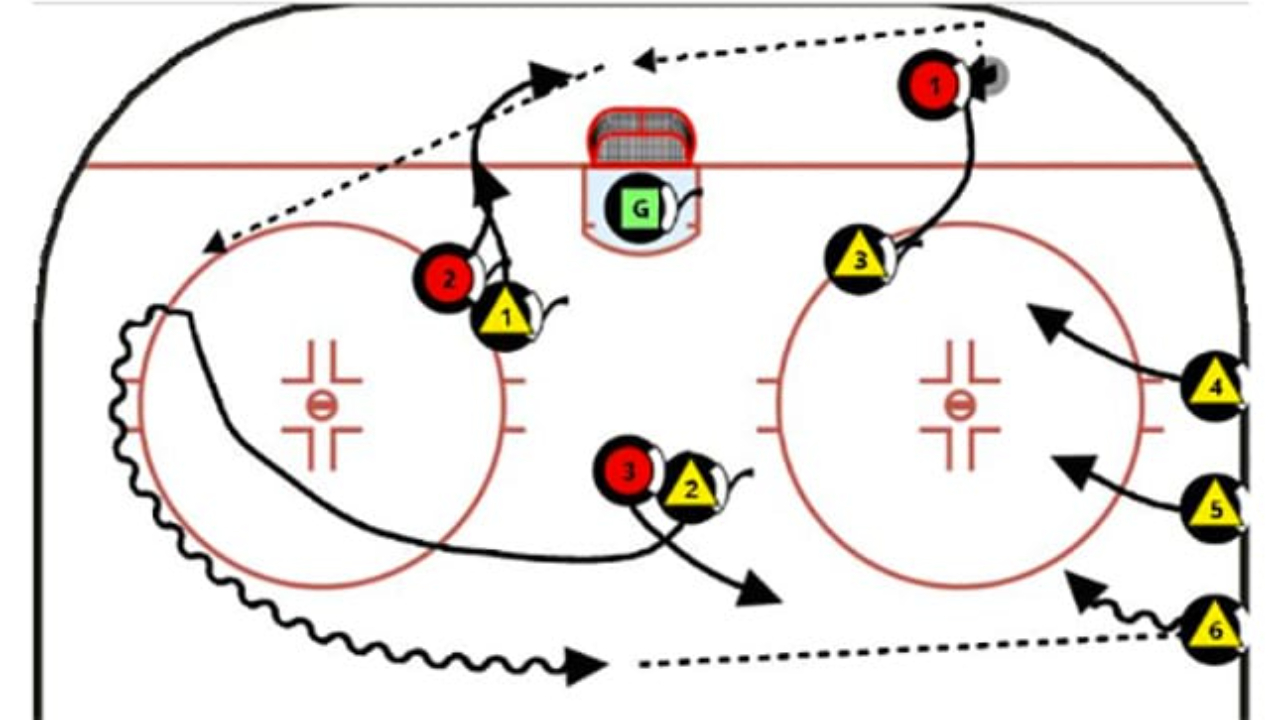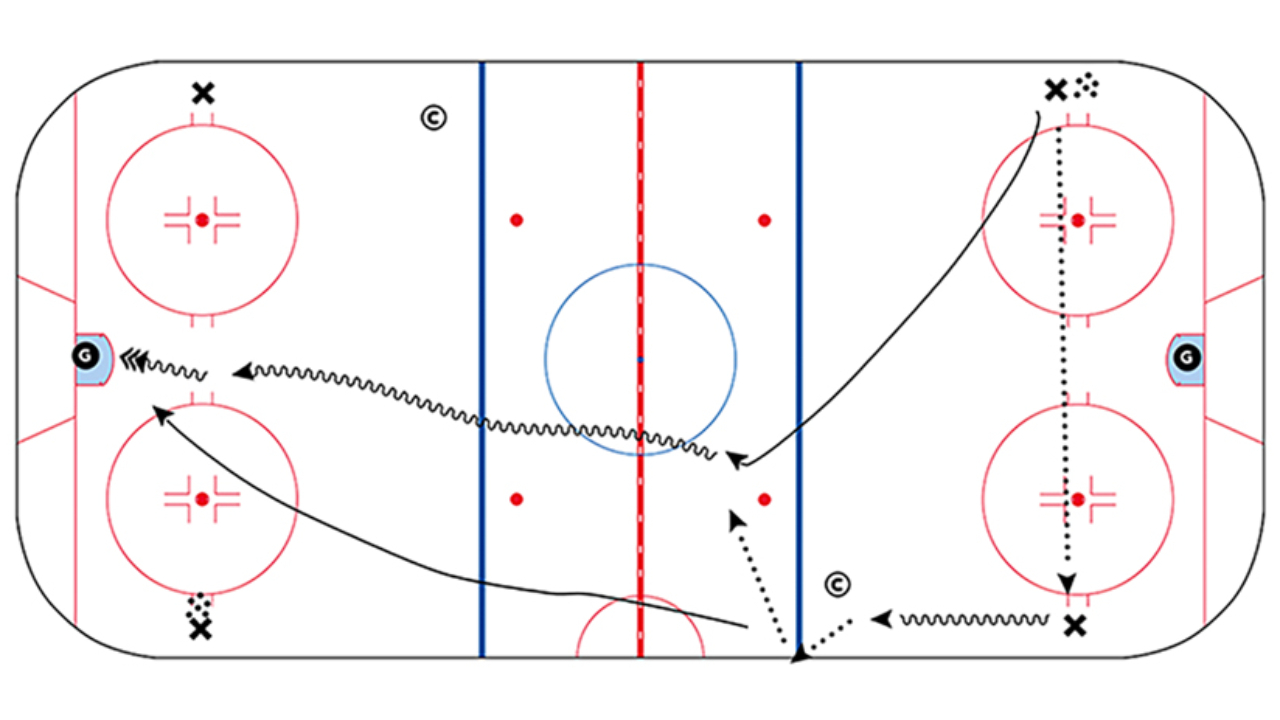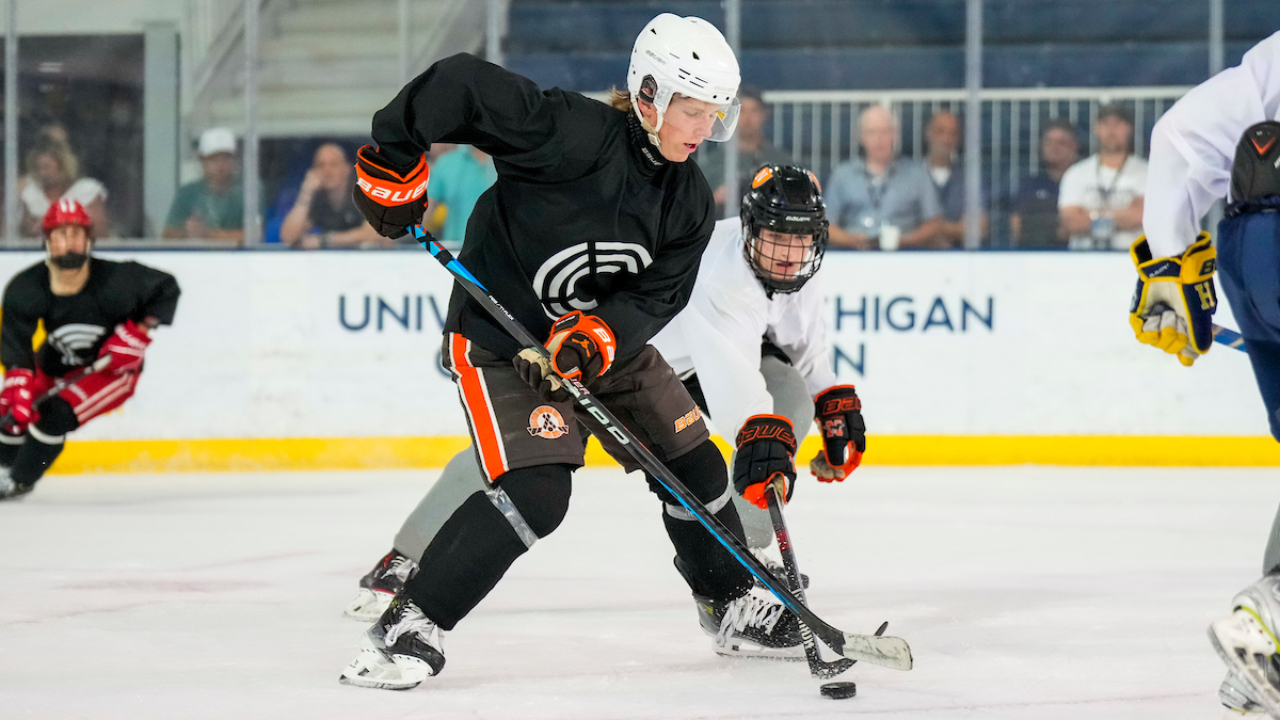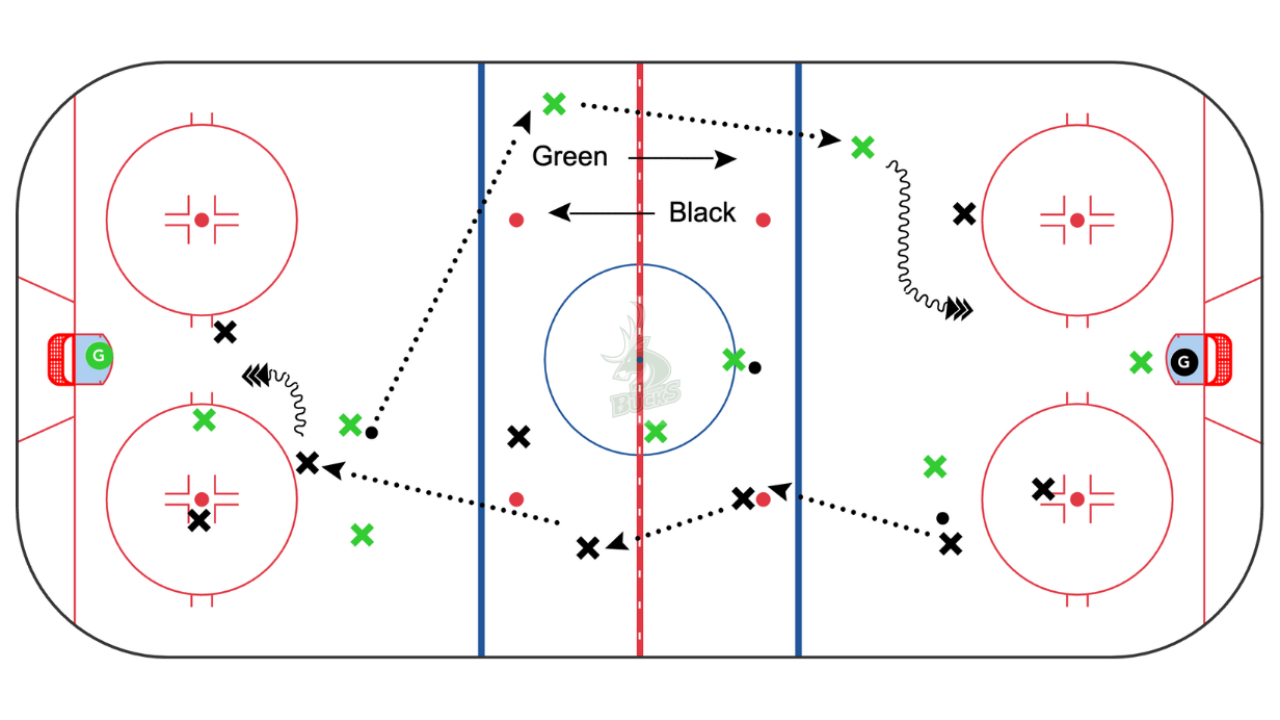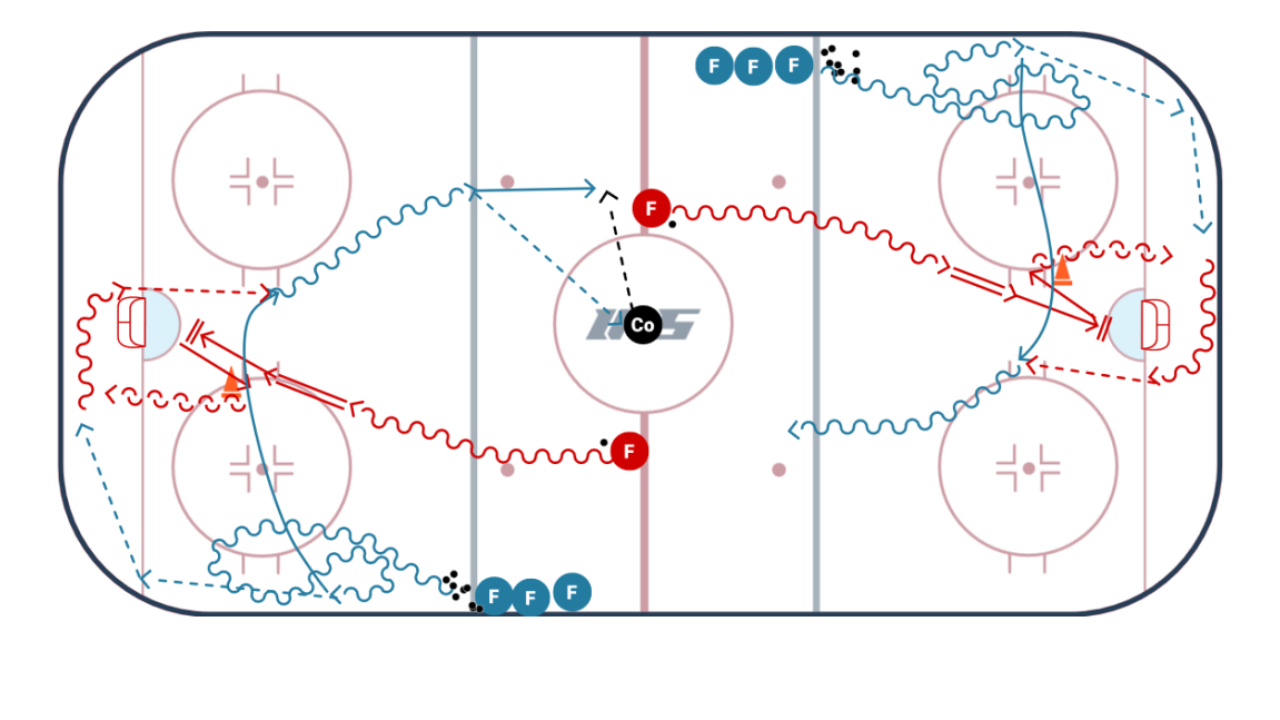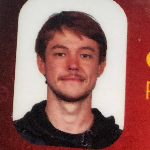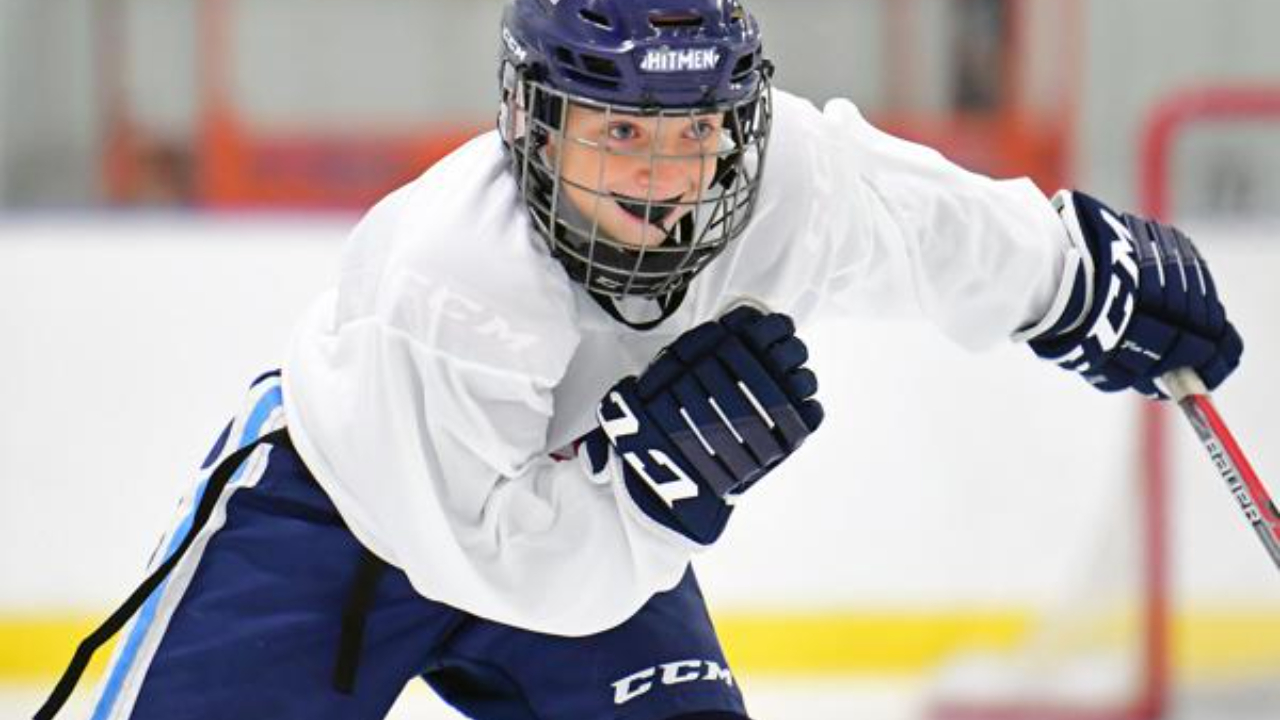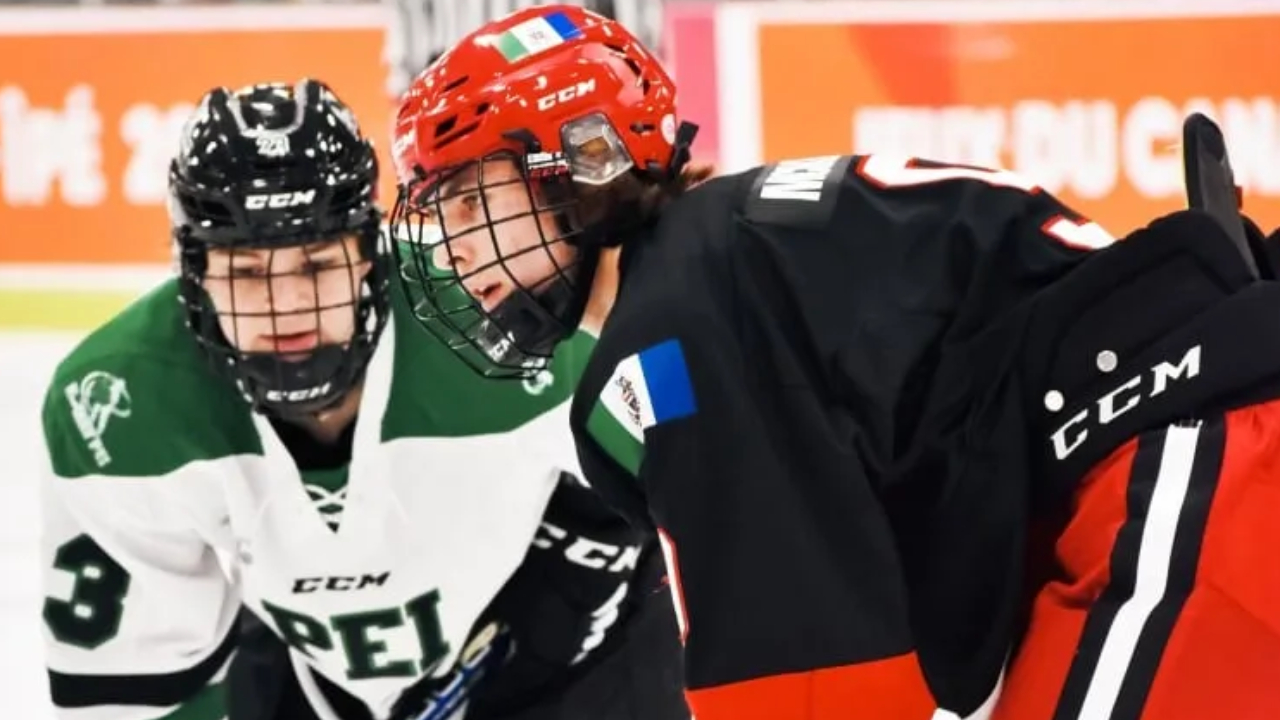
There's nothing more pure in practice than good ol' fashioned 1on1 battles. Chuck a puck in the corner and see who comes out with it. They're powerful for me to watch because you can see how different playing styles are effective at either retrieving or relieving possession of the puck. Small, quick players can use their agility and speed to check with their feet, or they can snap back and forth with possession if they have sharp puckhandling skills. Conversely, big players with a long wingspan can use that to their advantage to box in the puck carrier, or use their reach to protect the puck while they manouvre.
One issue with 1on1 drills, however, is they can be boring for everybody else. Not always, of course! There's a lot of pressure and excitement when you're playing 1on1 and all your teammates are watching and hollering from the blue line or the bench. There's a time and a place for that, but it's also helpful to build those situations into larger game-style scenarios. I run a lot of 1on1 drills that either add players or components so you get the best of both worlds. Here are two of my favourites.
Three 1on1's (Plus 3on3)
I've done this with every team I've ever coached, though I've tweaked it over the years. It's especially handy for teams who play man on man defence in the defensive zone, but at its core it's a simple tool to work on offensive and defensive habits both on a focused (1on1) and team (3on3) scale.
- Pass puck to first group's forward, who plays 1on1 vs. D
- After 15 seconds, a scoring chance, or a possession change, pass to the next group
- Same thing for group 3
- Once all three groups have played 1on1, pass to forwards for in-zone 3on3

Gordie Howe Backcheck
Doesn't get much more old school than this. This disguised bag skate is fabulous for reminding players that your shift isn't finished when you whip a shot 4 feet wide on the far side of then net. Looks confusing but it's not, just make sure you get the players and pucks on the proper sides of the ice. Pucks are all on the same side, coloours should be separated. Positions don't matter.
- One end starts on whistle, green passes to black and gaps up to defend 1on1.
- Once black takes a shot, coach blows the whistle and the other end repeats, this time with black passing to green
- The original two players backcheck to support the far end 1on1 - the green defender supports the offensive player, the black offensive player backchecks to help out
- Drill is continuous but with whistles signalling when the next end should start
No Sauce 1on1
I've actually changed the rule in this one multiple times - sometimes the players can sauce pass the puck, sometimes not. It's remarkable how much more often pucks get picked off when they're sauced, so it proves a point. But still, sometimes it's the right play. Knowing when to do what is the mark of high hockey IQ. This is a pretty simple warmup drill but it's fast and gets the blood going.
- Two players play give and go with their team lined up on the blue line
- Pass the puck, get open for return pass
- The player with the puck when the whistle blows shoots on a goalie
- On the whistle, each coach chips in a new puck for the next rep
- Reps should be 20 seconds max
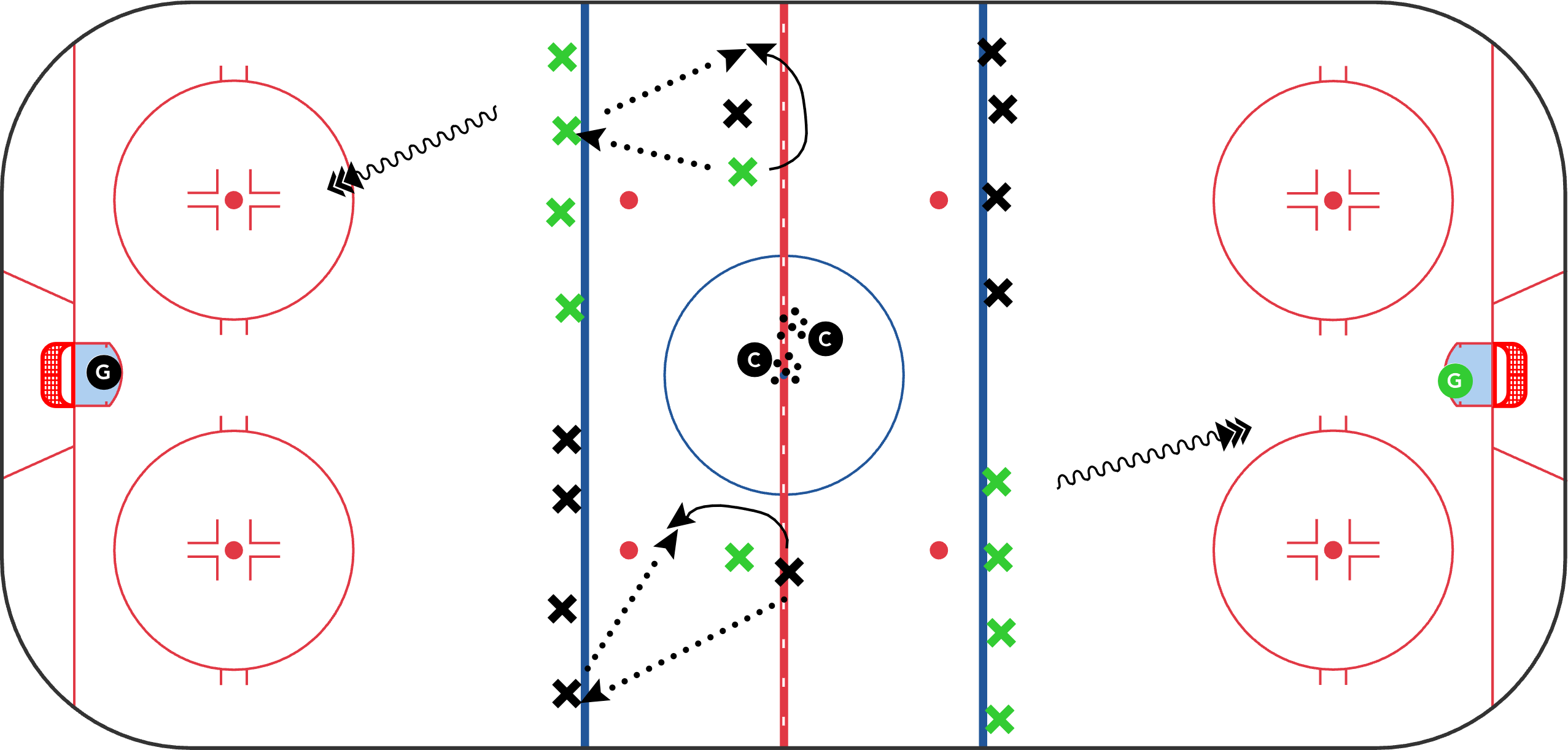
Winger Blue Line Battle
Any position can use this drill, but it's rare for a defenceman to be in this situation. I believe in blue battles above all else - win the blue lines and you likely win the hockey game. Both getting it out and getting it in, but primarily getting it out. That doesn't mean you should shoot it off the glass every shift - you're just giving it away. Sometimes you have to releieve pressure, but this season I'm going to work on winning the blue line every single practice. I mean it. We want possession as much as possible so we can attack through the neutral zone.
- One player retrieves puck under pressure
- Coach holds stick in the air or on the ice
- If stick is on the ice, player passes to coach, who bumps it back
- If stick is in the air, player skates puck around pile for a shot
- Forechecker chases the entire rep and can steal puck and go in for shot
- Both players stay in front for deflection and rebound from next rep
- Alternate sides
